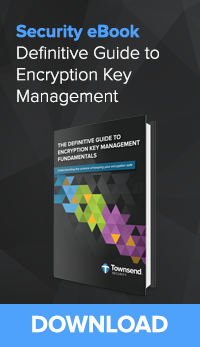I might as well start the New Year with an admission and an apology. Let’s clear the slate.
 In the past I’ve minimized the use of encryption as a specific way to deter Ransomware attacks. My thinking was that encryption would not really help you if your systems are compromised by Ransomeware. After all, my thinking was, the data is still on your servers it just isn’t accessible because it is now encrypted with a key that you don’t have. Of course, you can pay the ransom to unlock your data. There are lots of good reasons to encrypt sensitive data, but I was not seeing encryption as a specific way to specifically minimize the risks associated with Ransomware.
In the past I’ve minimized the use of encryption as a specific way to deter Ransomware attacks. My thinking was that encryption would not really help you if your systems are compromised by Ransomeware. After all, my thinking was, the data is still on your servers it just isn’t accessible because it is now encrypted with a key that you don’t have. Of course, you can pay the ransom to unlock your data. There are lots of good reasons to encrypt sensitive data, but I was not seeing encryption as a specific way to specifically minimize the risks associated with Ransomware.
I believed that your best defense against ransomware was to have good backups and be prepared to restore systems quickly from those backups. A lot of our customers had become lax in their backup strategy, and this left them exposed to Ransomware attacks. They just weren’t able to quickly restore from backups, or those backups did not exist, or they were not current enough.
I failed to understand the evolving nature of Ransomware threats. It simply did not occur to me that a cybercriminal would BOTH lock your data AND steal the data and threaten to release it if the ransom payment was not made. That is exactly what is happening now.
It is now clear to me that encrypting your sensitive data is an important part of your defense against Ransomware attacks. If the attacker cannot access the data, they can’t threaten its release to put pressure on you. So it is time to revisit your security strategy around Ransomware:
- Backups are still important. They are a first line defense against Ransomware.
- Your backup strategy is not complete until you fully test the restore process. You will always find glitches during the test of the restore operation. You don’t want to be finding these glitches during a Ransomware recovery process.
- Encrypt all sensitive data to deny its use by attackers.
- Use proper encryption key management as a part of your encryption strategy. Locally stored encryption keys (SQL Server, MongoDB, MySQL, and so forth) are easy to recover. If you are not protecting the encryption keys you don’t have an encryption strategy.
There is much more that you need to do to protect against Ransomware, but these items are crucial to your strategy.
Encryption has many other benefits including helping you meet compliance regulations (California CPA, etc.), helping you minimize reputational damage, helping you protect digital assets and business secrets, and much more. It is time to review your encryption strategy and plug any holes.
If you are a small organization you don’t have to feel left out in the cold. Here at Townsend Security we help small organizations get encryption and key management right. You are NOT priced out of the market. If you are a small organization ask us about our SMB plan.
Patrick

